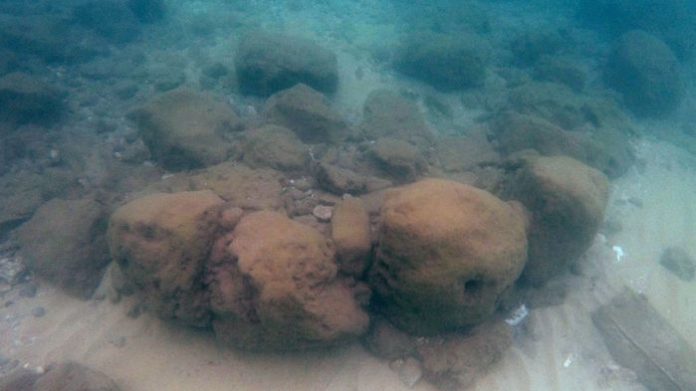According to research by an international team of archaeologists, a more than 300 feet long wall build 7,000 years ago using large boulders was a failed attempt to cope with rising sea-levels.
According to the article’s authors, the wall was constructed to stave off ever-rising sea water from melting glaciers. It predates other ancient breakwalls by 3,000 years.
“The seawall is unique for the period and is the oldest known coastal defense worldwide,” write the group of researchers from University of Haifa, Flinders University in Australia, the Israel Antiquities Authority and The Hebrew University.
The wall was first discovered in 2012. After years of study, the researchers concluded that the residents constructed the over 100-meter-long seawall from boulders of up to 1 meter in size that were taken from riverbeds some 1-2 kilometers from their village. The large boulders were from limestone or kurkar stone and weigh between 200-1000 kilograms each.
The zigzagging seawall was intentionally planned and constructed with several different building styles to keep out the rising water, write the authors. “Notably, for its entire length, it is free-standing… the wall is not attached to any domestic structure in the village,” they write.
Unfortunately, said Dr. Ehud Galili from the University of Haifa’s Zinman Institute of Archaeology, the extreme measure to protect the village did not pay off and the residents had to eventually abandon their homes.
In a press release, Galili explained that during the Neolithic era, people living along the Mediterranean would have experienced a sea-level rise of approximately 12-21 centimeters during a lifetime, which works out to be around 70cm in a 100 years. Ancient Tel Hreiz itself was built at “a safe elevation” of three meters above sea level — which would not have felt safe for long.
But it is not only the encroaching water that would have caused havoc on the villagers and their homes. “This rate of sea-level rise means the frequency of destructive storms damaging the village would have risen significantly,” said Galili in the press release.








